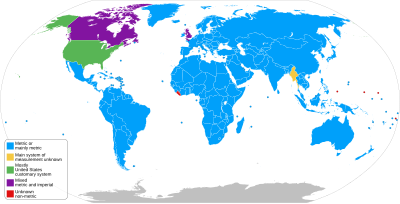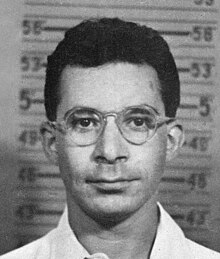Portal:History of science
The History of Science Portal
The history of science covers the development of science from ancient times to the present. It encompasses all three major branches of science: natural, social, and formal. Protoscience, early sciences, and natural philosophies such as alchemy and astrology during the Bronze Age, Iron Age, classical antiquity, and the Middle Ages declined during the early modern period after the establishment of formal disciplines of science in the Age of Enlightenment.
Science's earliest roots can be traced to Ancient Egypt and Mesopotamia around 3000 to 1200 BCE. These civilizations' contributions to mathematics, astronomy, and medicine influenced later Greek natural philosophy of classical antiquity, wherein formal attempts were made to provide explanations of events in the physical world based on natural causes. After the fall of the Western Roman Empire, knowledge of Greek conceptions of the world deteriorated in Latin-speaking Western Europe during the early centuries (400 to 1000 CE) of the Middle Ages, but continued to thrive in the Greek-speaking Byzantine Empire. Aided by translations of Greek texts, the Hellenistic worldview was preserved and absorbed into the Arabic-speaking Muslim world during the Islamic Golden Age. The recovery and assimilation of Greek works and Islamic inquiries into Western Europe from the 10th to 13th century revived the learning of natural philosophy in the West. Traditions of early science were also developed in ancient India and separately in ancient China, the Chinese model having influenced Vietnam, Korea and Japan before Western exploration. Among the Pre-Columbian peoples of Mesoamerica, the Zapotec civilization established their first known traditions of astronomy and mathematics for producing calendars, followed by other civilizations such as the Maya.
Natural philosophy was transformed during the Scientific Revolution in 16th- to 17th-century Europe, as new ideas and discoveries departed from previous Greek conceptions and traditions. The New Science that emerged was more mechanistic in its worldview, more integrated with mathematics, and more reliable and open as its knowledge was based on a newly defined scientific method. More "revolutions" in subsequent centuries soon followed. The chemical revolution of the 18th century, for instance, introduced new quantitative methods and measurements for chemistry. In the 19th century, new perspectives regarding the conservation of energy, age of Earth, and evolution came into focus. And in the 20th century, new discoveries in genetics and physics laid the foundations for new sub disciplines such as molecular biology and particle physics. Moreover, industrial and military concerns as well as the increasing complexity of new research endeavors ushered in the era of "big science," particularly after World War II. (Full article...)
Selected article -

The history of the metric system began during the Age of Enlightenment with measures of length and weight derived from nature, along with their decimal multiples and fractions. The system became the standard of France and Europe within half a century. Other measures with unity ratios were added, and the system went on to be adopted across the world.
The first practical realisation of the metric system came in 1799, during the French Revolution, after the existing system of measures had become impractical for trade, and was replaced by a decimal system based on the kilogram and the metre. The basic units were taken from the natural world. The unit of length, the metre, was based on the dimensions of the Earth, and the unit of mass, the kilogram, was based on the mass of a volume of water of one litre (a cubic decimetre). Reference copies for both units were manufactured in platinum and remained the standards of measure for the next 90 years. After a period of reversion to the mesures usuelles due to unpopularity of the metric system, the metrication of France and much of Europe was complete by the 1850s. (Full article...)Selected image

A Philosopher Lecturing on the Orrery (sometimes called simply The Orrery) is a painting (oil on canvas, ca. 1766) by Joseph Wright of Derby depicting a public lecture about a model Solar System, with a lamp—in place of the Sun—illuminating the faces of the audience. Wright captures the spirit of the Enlightenment, with knowledge as a force of moral uplift for the audience of commoners under the tutelage of the natural philosopher. Consistent with the astronomical theme, the partially illuminated faces may represent the phases of the Moon, ranging from full (the children) to gibbous (the man standing on the left) to new (the figure seen from behind).
Did you know
...that Einstein's famous letter to FDR about the possibility of an atomic bomb was actually written by Leó Szilárd?
...that geology was transformed in the latter part of the 20th century after widespread acceptance of plate tectonics?
...that the idea of biological evolution dates to the ancient world?
Selected Biography -
Louis Alexander Slotin (/ˈsloʊtɪn/ SLOHT-in; 1 December 1910 – 30 May 1946) was a Canadian physicist and chemist who took part in the Manhattan Project. Born and raised in the North End of Winnipeg, Manitoba, Slotin earned both his Bachelor of Science and Master of Science degrees from the University of Manitoba, before obtaining his doctorate in physical chemistry at King's College London in 1936. Afterwards, he joined the University of Chicago as a research associate to help design a cyclotron.
In 1942, Slotin was invited to participate in the Manhattan Project, and subsequently performed experiments with uranium and plutonium cores to determine their critical mass values. After World War II he continued his research at Los Alamos National Laboratory in New Mexico. On 21 May 1946, he accidentally triggered a fission reaction which released a burst of hard radiation. He was rushed to the hospital and died nine days later on 30 May. Slotin had become the victim of the second criticality accident in history following Harry Daghlian, who had been fatally exposed to radiation by the same plutonium "demon core" that killed Slotin. (Full article...)Selected anniversaries
- 1711 - Birth of Georg Wilhelm Richmann, Russian physicist (d. 1753)
- 1755 - Birth of Gaspard de Prony, French mathematician (d. 1839)
- 1784 - Birth of Friedrich Bessel, German mathematician and astronomer (d. 1846)
- 1802 - Death of Marie François Xavier Bichat, French anatomist (b. 1771)
- 1826 - Death of Giuseppe Piazzi, Italian astronomer (b. 1746)
- 1887 - Birth of Gustav Ludwig Hertz, German physicist, Nobel laureate (d. 1975)
- 1888 - Birth of Kirk Bryan, American geologist (d. 1950)
- 1888 - Birth of Selman Waksman, Ukrainian/American biochemist, Nobel laureate (d. 1973)
- 1922 - Death of Jokichi Takamine, Japanese chemist (b. 1854)
Related portals
Topics
General images
Subcategories
Things you can do
Help out by participating in the History of Science Wikiproject (which also coordinates the histories of medicine, technology and philosophy of science) or join the discussion.
Associated Wikimedia
The following Wikimedia Foundation sister projects provide more on this subject:
-
Commons
Free media repository -
Wikibooks
Free textbooks and manuals -
Wikidata
Free knowledge base -
Wikinews
Free-content news -
Wikiquote
Collection of quotations -
Wikisource
Free-content library -
Wikiversity
Free learning tools -
Wiktionary
Dictionary and thesaurus









































































